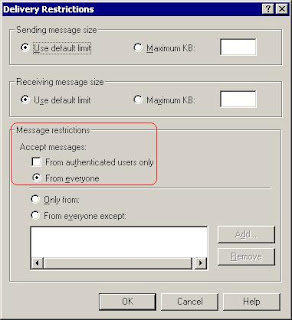
ERROR:
Event Type: Information
Event Source: MSExchangeTransport
Event Category: NDR
Event ID: 3027
Date: 6/23/2010
Time: 4:55:22 PM
User: N/A
Computer: XXXXX
Description:
A non-delivery report with a status code of 5.7.1 was generated for recipient rfc822;test@corusmiddleeast.com (Message-ID ).
Causes: This message indicates that the sender was denied access or general access was denied.
Solution: Check system privileges and attributes for the contact and retry sending the message.
For more information, click http://www.microsoft.com/contentredirect.asp.
Data:
0000: 46 05 04 80 F..€
Solution:
5.7.1 status code is that the text may indicate that the client was not authenticated. When you receive this particular message, it indicates that the sending mail server must be authenticated with the receiving mail system before delivery can take place. However, this type of nondelivery report can also be generated if you attempt to accept anonymous SMTP mail from the Internet via a hub transport server. Hub transport service can be configured to accept Internet mail, but by default, Microsoft assumes that you're going to be using an edge transport server for this purpose.
Open AD Users and Computers-> Search User -> Go to Exchange General ->
Delivery Restrictions -> From Authenticate should be deselected under accept message under message restriction.
